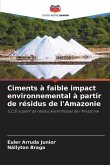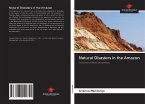Currently, one of the materials that most contributes to global warming is cement (second most consuming material by mass). The use of mineral additions as partial replacement of clinker in Portland cement has been one of the main strategies for reducing CO2 emissions by the global cement industry. However, the availability of blast furnace slag and fly ash does not meet the demand. In the Amazon, the kaolin beneficiation industries as paper cover have already deposited about 70 million tons of waste consisting mainly of extremely fine kaolinite. An alternative for the region would be the use of Portland cement with mineral additions of limestone and calcined clay to produce a low CO2 emission cement, the limestone calcined clay cement (LC3). The objective of this work was to evaluate the properties of these cements from high incorporations of limestone and metakaolin from calcined mine processing waste, the kaolin flint.








